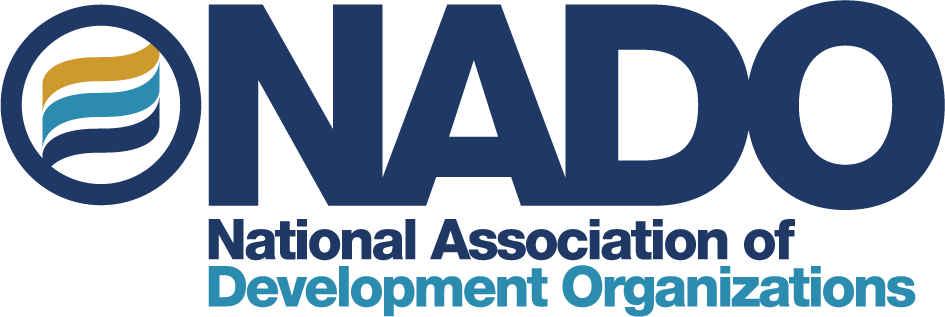This research project indicates that more states are turning to regional-level transportation planning in non-metropolitan areas than has been seen in prior work conducted by the NADO Research Foundation. (12) The findings also suggest that in spite of increasingly limited budgets for planning, rural planning organizations are seeking ways to improve peer accountability and the quality of deliverables that contribute to statewide planning. This is demonstrated as project selection is becoming more formalized with performance-based criteria that connect projects to a regional vision and goals.
Also, the research indicates that regions are taking steps to link planning processes, such as transportation, with economic development, land use, housing, environment, and other issues. As transportation planning processes increase in formality, shared goals and objectives and complementary project scoring criteria can help to ensure that these planning processes occur in harmony rather than funding projects with conflicting priorities or unassociated purposes with one another. Just as federal agencies are coordinating their programs and investments more and more—such as through the Sustainable Communities Initiative announced by the U.S. Department of Transportation, Environmental Protection Agency, and Housing and Urban Development in 2009—regions are also finding ways to leverage limited planning funds, stakeholder time and resources, and project funds by coordinating LRTP and TIP development with other federal and state plans, including the Comprehensive Economic Development Strategy (CEDS, required by the Economic Development Administration) and plans developed through HUD’s Sustainable Communities Regional Planning Grant.
The scan and interview data suggest that because RPOs function mainly under contract to state DOTs, the initiatives, goals, objectives and decisionmaking processes and strategies that are espoused at the state level will also have an effect on the manner in which priority projects are ranked at the regional level. The relationship of rural planning as a sub-set of activities conducted through statewide planning explains this in part, but it also is indication of the levels of partnership that exist between many state DOTs, regional development organizations, and the local government members and public they serve. Through emphasizing an inclusive engagement process, many state DOTs’ goals contain similar priorities to common local goals, such as an efficient transportation network in good repair that supports the state’s economy and provides mobility and connectivity for the traveling public and freight. Although specific local priorities may not rise to the same level of importance at the state level, statewide decisionmaking is understood by local and regional stakeholders when it is transparent and based on shared goals and objectives.
Many of the planning elements emerging as commonalities in the performance-based planning process are evident in the planning activities conducted in rural and small metropolitan regional plans. Defining a common vision for the region’s future (a foundational step in performance-based planning) is already occurring for the vast majority of respondents, who indicated that their organization has engaged the region in a visioning or scenario planning effort. Several of these organizations have taken additional steps of identifying goals, objectives, and strategies in their LRTPs that further define that vision and steps toward achieving it, as well as working with local government members and stakeholders to determine criteria that guide project ranking according to their region’s vision and policy priorities. As their state DOT partners move toward performance-based planning, RPOs and small MPOs are likely to engage in discussions and contribute to statewide target-setting and monitoring processes.
The research conducted by the NADO Research Foundation through this national scan raises further questions about regional transportation planning outside of metropolitan areas. Interview data suggest that the development of the public participation plan has a significant effect on the manner in which planning is performed and the outcomes of planning practice. Additional research on the nature of public participation plan development and the outcomes of implementing the public participation plan in shaping the regional planning effort and performance-based planning may be of use. In addition, future research will analyze the nature of plan elements more thoroughly, such as analyzing how typical goals, objectives and quantitative and qualitative targets are translated into project ranking criteria and in developing a plan for the future of the regions’ transportation network.
Information Sources:
1 NADO Research Foundation. Transportation Planning in Rural America: Emerging Models for Local Consultation, Regional Coordination and Rural Planning Organizations, 2005; and 2009 National Scan: Rural Transportation Planning Organizations.
2 Southeast Iowa Regional Planning Commission. FFY 2015 Region 16 Surface Transportation Program Application, n.d.
3 Eric Curtit, Missouri DOT. “Developing Criteria for Project Prioritization,” presented at 2008 National Rural Transportation Peer Learning Conference, August 2008. Marlie Sanderson, North Central Florida RPC, personal communication, December 2010.
4 Lowcountry Council of Governments. “Transportation Project Decision-Making Matrix,” n.d.
5 North Country Council, “Transportation Improvement Projects (TIP) Scoring,” 2010; Mid-East RPO, “Project Prioritization Worksheet,” n.d.; Southeast RPO (New Mexico), “Project Application Guidelines and Rating Criteria,” 2011.
6 Interview with Alpesh Patel, Senior Transportation Engineer, North Carolina Department of Transportation, Strategic Planning Office of Transportation, September 16, 2011.
7 North Central Regional Planning and Development Commission. Long-Range Transportation Plan, and “Project Prioritization Process & Scoring Methodology,” 2009.
8 The formation of RTPOs to facilitate the planning process in areas outside of MPOs, is authorized by the Growth Management Act enacted by the Washington State Legislature in 1990.
9 Washington State Department of Transportation. WSDOT Local Agency Guidelines, Chapter 12, FHWA Funding Programs, pages 12-17, 2008.
10 Interview with Deb LaCombe, Senior Transportation Planner, Yakima Valley Conference of Governments, September 8, 2011.
11 Yakima Valley Conference of Governments. “2010-2011 STP Regional Competitive Application,” 2010.
12 NADO Research Foundation, 2005, 2009.


